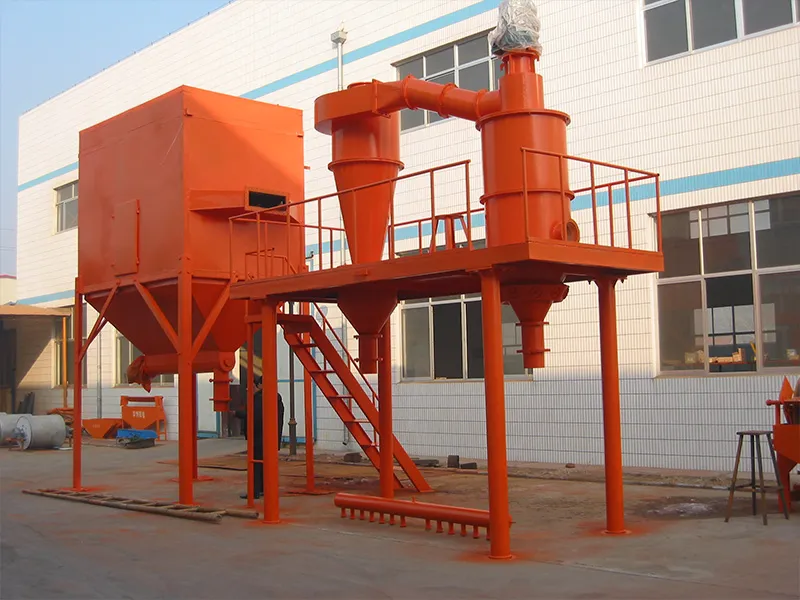Confused by classifier choices? Epic Powder Machinery breaks down air classifiers like HTS, ITC, TDC, MBS and CTC. Find the perfect fit for your calcium carbonate, talc, or other non-metallic minerals. Maximize efficiency & product value.
In the world of fine powder processing, selecting the right air classifiers can make all the difference in efficiency, output quality, and operational costs. Epic Powder, a leading manufacturer of advanced powder air classifiers, offers a versatile lineup of air classifiers designed for industries like minerals, pharmaceuticals, food processing, and ceramics. Their portfolio includes the HTS Air Classifier (available in multi-rotor and single-rotor types), Air Classifying ITC, Centrifugal Classifier CTC, Powder Air Separator MBS, and Turbo-Twin Double Classifier TDC—each engineered for specific particle size ranges, throughput demands, and material types.
This comprehensive comparison guide breaks down these models based on key factors like fineness range, capacity, energy efficiency, and applications. Whether you’re optimizing a closed-circuit grinding system or achieving ultra-fine classification, we’ll help you identify the ideal Epic Powder air classifier for your setup.
Overview of Epic Powder’s Air Classifiers
Epic Powder’s air classifiers leverage cutting-edge German and British engineering for dry classification, using principles like centrifugal force, airflow dynamics, and rotor technology. All models emphasize low maintenance, customizable designs, and wear-resistant components for handling abrasive materials. Here’s a quick snapshot:
- HTS Air Classifier (Multi-Rotor Type): Ideal for ultra-fine powders with multiple rotors boosting surface area and output— a top pick for high-volume mineral processing.
- HTS Air Classifier (Single-Rotor Type): Streamlined horizontal design for precise, efficient classification in compact setups, favored for its speed and flexibility.
- Air Classifying ITC: Versatile single-rotor system for precise mid-range classification.
- Centrifugal Classifier CTC: Compact, cost-effective option for coarser separations in hard materials.
- Powder Air Separator MBS: High-throughput beast for large-scale operations.
- Turbo-Twin Double Classifier TDC: Patented tech for superfine results in fillers and minerals.
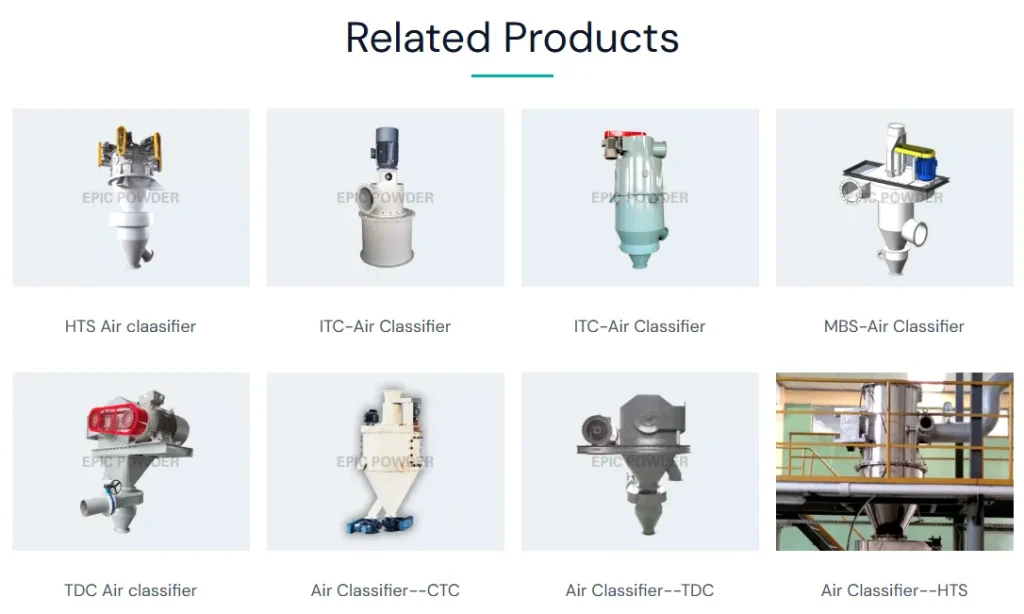
HTS Multi-Rotor Type: Amplified Output for Demanding Applications
This variant multiplies classification efficiency with 2–6 rotors, expanding the effective surface area for superior handling of ultra-fine powders. Rotor diameters range from 315–630 mm, with speeds controlled via inverters for optimal force distribution. It’s perfect for industries needing 2–6x the throughput of single-rotor setups, like mineral fillers or ceramics, without sacrificing precision.
Technical Parameters of HTS Multi-Rotor Type
| Parameter / Model | 200/4 | 315/3 | 315/4 | 315/6 | 400/6 | 500/3 | 500/4 | 500/6 | 630/6 |
|---|---|---|---|---|---|---|---|---|---|
| Particle size (D97: μm) | 5-100 | 3-100 | 3-120 | 3-120 | 4-150 | 5-150 | 6-150 | 6-150 | 6-150 |
| Classification efficiency (η) | 60~80% | 60~80% | 60~80% | 60~80% | 60~80% | 60~80% | 60~80% | 60~80% | 60~80% |
| Classifier motor (kW) | 2.2 | 3 | 4 | 7.5 | 11 | 18.5/22 | 22/30 | 30/45 | 37/55 |
| Air volume (m³/h) | 150 | 300 | 600 | 1200 | 2000 | 5600 | 8800 | 14000 | 20000 |
Additional Features: Secondary air inlets for enhanced separation; suitable for metallurgy, abrasives, and new materials; higher output via multi-rotor design.
HTS Single-Rotor Type: Precision and Simplicity in One Wheel
The single-classifying wheel configuration offers a horizontal, compact footprint with linear speeds up to 100 m/s, ideal for precise D50 cuts from 1.5–25 μm. Rotor diameters span 70–1000 mm, making it scalable for lab pilots to industrial lines. Clients appreciate its straightforward setup and frequency-converted speed adjustments, which ensure sharp particle size distributions in pharma, food, and chemical applications.
Technical Parameters of HTS Single-Rotor Type
| Parameter / Model | 70 | 100 | 140 | 200 | 260 | 315 | 400 | 500 | 630 | 750 | 1000 |
|---|---|---|---|---|---|---|---|---|---|---|---|
| Particle size (D97: μm) | 5–100 | 3–100 | 3–120 | 3–120 | 3–150 | 3–150 | 4–150 | 5–150 | 6–150 | 6–150 | 6–150 |
| Classification efficiency (η) | 60~80% | 60~80% | 60~80% | 60~80% | 60~80% | 60~80% | 60~80% | 60~80% | 60~80% | 60~80% | 60~80% |
| Classifier motor (kW) | 2.2 | 3 | 4 | 7.5 | 11 | 15/18.5 | 18.5/22 | 22/30 | 30/45 | 37/55 | 45/75 |
| Air volume (m³/h) | 150 | 300 | 600 | 1200 | 2000 | 3500 | 5600 | 8800 | 14000 | 20000 | 35000 |
Additional Features: Adjustable rotor for flexible force; dry micron material focus; broad applications in medicine, pesticides, and refractory.
Key Specifications Comparison Table
To make side-by-side analysis easy, here’s a comparison table highlighting core specs. Data is drawn from Epic Powder’s official specifications, focusing on fineness (D97 particle size), capacity indicators, power consumption, efficiency, and standout features.
| Model | Fineness Range (D97, μm) | Max Capacity (t/h or Air Volume) | Power Consumption (kW) | Efficiency (%) | Key Features & Best For |
|---|---|---|---|---|---|
| HTS Air Classifier (Multi-Rotor Type) | 3–150 | Up to 20,000 m³/h air volume | 2.2–55 | 60–80 | 2–6 rotors for increased output; ultra-fine minerals like kaolin, talc |
| Air Classifying ITC | 2–200 (typically 5–150) | Up to 150,000 m³/h air volume | 4–110 | 60–90 | Single high-speed rotor; versatile for pharma, food, and chemicals |
| Centrifugal Classifier CTC | 32–250 | 1–50 t/h | 7.7–97 (fan + classifier) | Not specified (high via self-grading) | Internal air circulation; low-cost for abrasives, quartz sand |
| Powder Air Separator MBS | 8–200 (standard 8–38) | Up to 840 t/h | 5.5–630 | Not specified (low pressure design) | High-hardness handling; closed-circuit ball mill integration |
| Turbo-Twin Double Classifier TDC | 3–45 | High throughput (model-dependent) | Not specified (up to 25% energy savings) | High fines yield | Patented wheel for superfine fillers like CaCO3, talc; energy-efficient |
Note: Capacities vary by model size and material; consult Epic Powder for custom configs. Fineness adjustable via rotor speed and airflow.
Detailed Comparison: Breaking Down Performance Factors
1 Fineness and Precision: Achieving the Right Particle Size
Precision in particle size distribution (PSD) is crucial for applications like pharmaceuticals or high-end ceramics. Epic Powder excels here with adjustable controls across models.
Top for Ultra-Fine (Under 10 μm): The Turbo-Twin Double Classifier TDC shines with d97 down to 3 μm, thanks to its patented NG wheel and high peripheral speeds (up to 120 m/s). It’s perfect for soft-medium hard minerals like calcium carbonate (GCC) or kaolin, where older classifiers fall short.
Versatile Mid-Range (5–150 μm): The Air Classifying ITC and Multi-Rotor Air Classifier dominate, with the ITC hitting 2–45 μm generally and the Multi-Rotor extending to 150 μm via multiple rotors for better separation of density-varied particles.
Coarser Cuts (32+ μm): Opt for the Centrifugal Classifier CTC (32–250 μm) or Powder Air Separator MBS (up to 200 μm) when apex cutting isn’t ultra-precise but throughput is key.
If your process demands d97 < 5 μm, the TDC’s double-flooded outlet prevents back-mixing, ensuring sharper PSD than single-rotor alternatives.
2 Capacity and Throughput: Scaling for Industrial Demands
From lab-scale pilots to massive production lines, Epic Powder scales seamlessly.
High-Volume Powerhouse: The Powder Air Separator MBS leads with up to 840 t/h feed rates, ideal for large mineral processing plants. Its internal circulation minimizes space and pairs effortlessly with ball mills in closed circuits.
Balanced Output: Air Classifying ITC handles 150,000 m³/h air volume for mid-sized ops, while the Multi-Rotor Air Classifier boosts single-wheel efficiency by 2–6x through added rotors.
Compact Efficiency: Centrifugal Classifier CTC (1–50 t/h) and TDC focus on quality over quantity, with the CTC’s self-contained design eliminating extra fans or collectors.
For high-throughput mineral grinding, the MBS’s low-pressure hierarchical structure cuts energy use while maximizing yield.
3 Energy Efficiency and Maintenance: Long-Term Cost Savings
Sustainability matters—Epic Powder prioritizes low-pressure drops and durable builds.
- Energy Savers: TDC offers up to 25% savings via optimized routing and no-gap adjustments, reducing downtime. CTC follows with internal fans, slashing peripheral equipment needs.
- Low-Maintenance Champs: All models feature wear-resistant linings (e.g., alumina ceramics in CTC for iron-free ops), but the ITC and Multi-Rotor add inverter controls and sensors for easy speed tweaks.
- High-Power for Scale: MBS (up to 630 kW) trades efficiency for raw capacity, but its British-German design ensures minimal wear on high-hardness feeds.
Overall, the CTC and TDC minimize total ownership costs, making them go-tos for budget-conscious setups.
4 Applications: Tailored for Diverse Industries
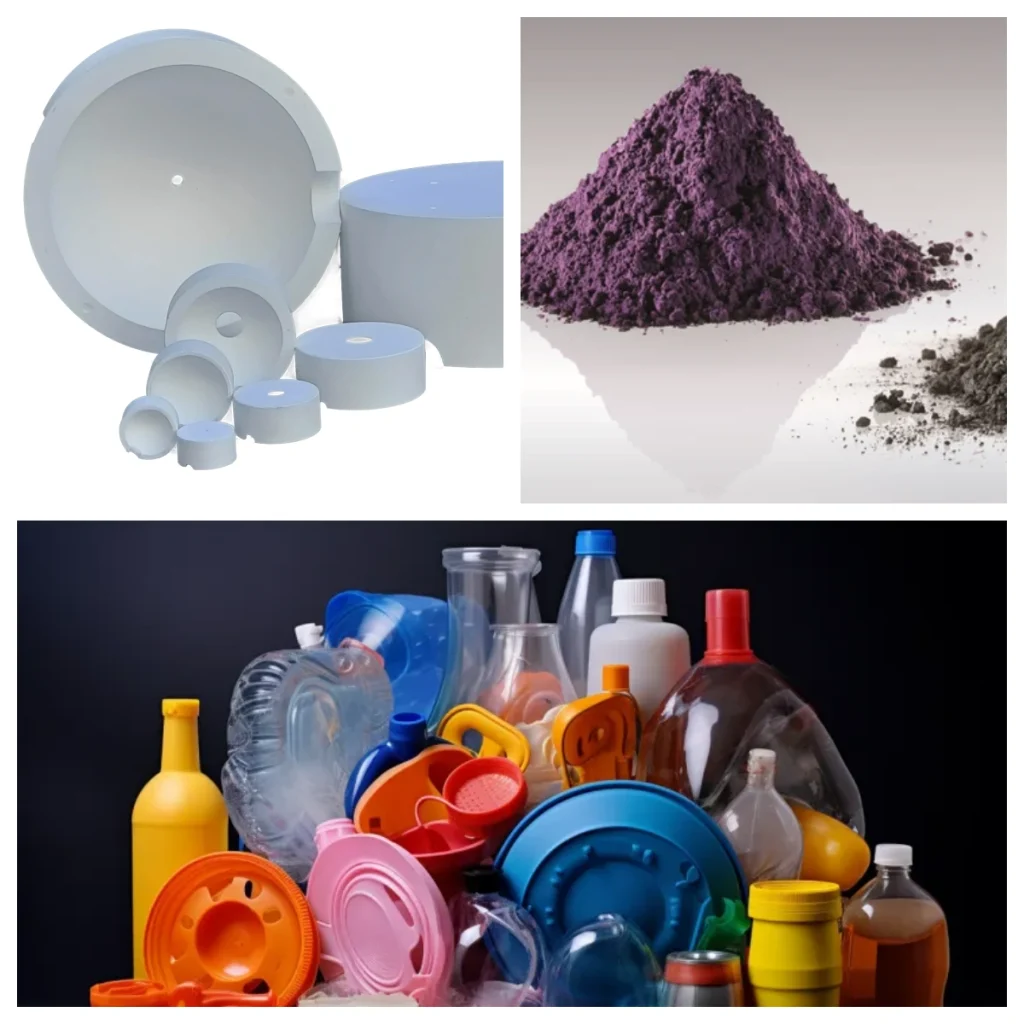
Epic Powder’s classifiers adapt to everything from food-grade powders to refractory materials.
- Minerals & Abrasives: CTC and MBS handle quartz, talc, and marble with robust linings.
- Pharma & Food: ITC and Multi-Rotor excel in clean, precise cuts for pesticides, health products, and additives.
- Fillers & New Materials: TDC’s superfine edge suits dolomite, barite, and experimental CaCO3 lines.
- Cross-Industry Versatility: All support metallurgy, ceramics, and non-minerals like kaolin.
For closed-loop systems in cement or lime processing, the MBS integrates best; for R&D pilots, try the TDC-500 model.
How to Choose the Right Epic Powder Air Classifier
1. HTS Multi-Rotor Air Classifier: For Unmatched Precision
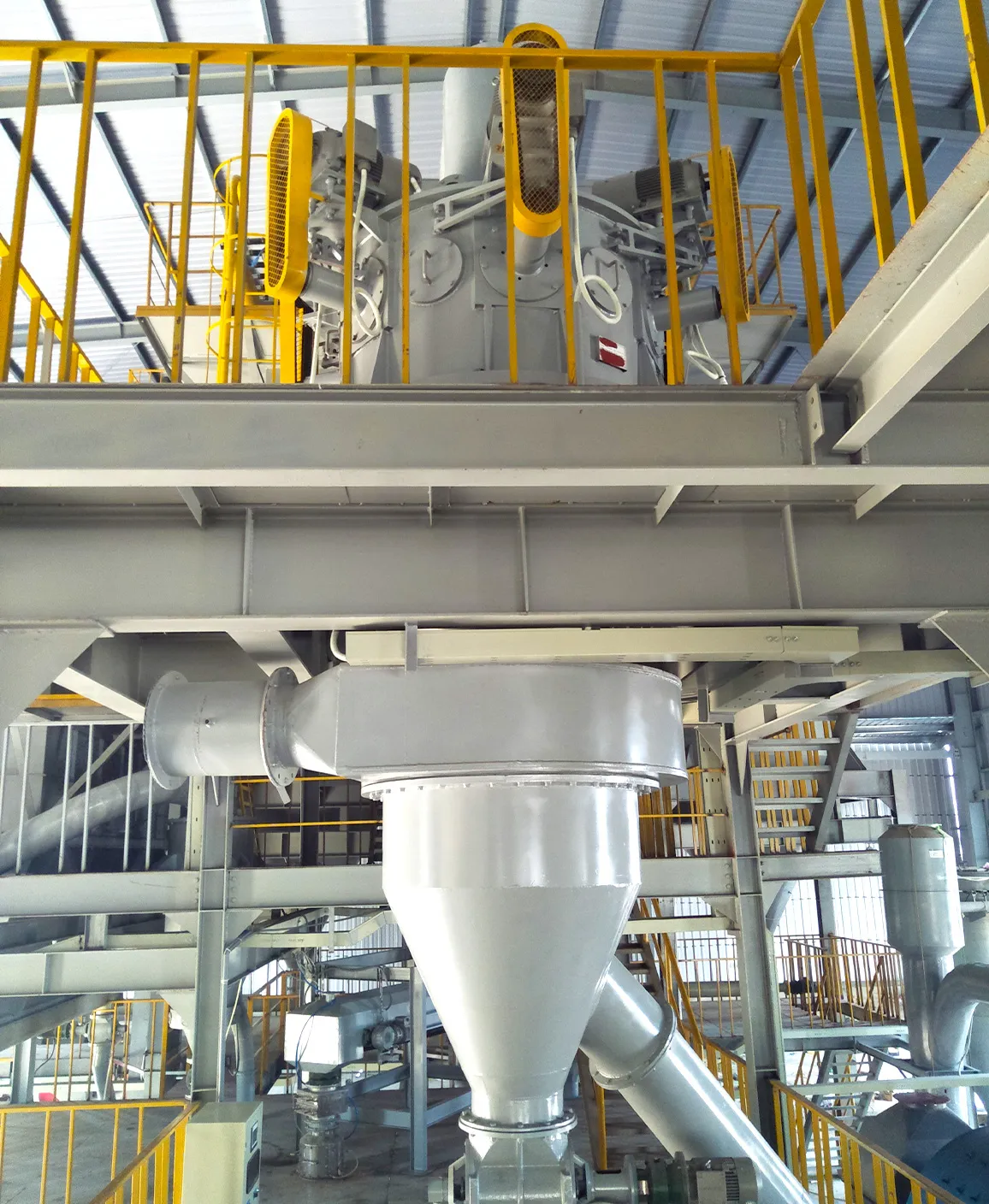
The HTS is engineered for applications where consistency and top-cut control are non-negotiable. Its unique design features multiple classification rotors stacked vertically, creating several classification stages within a single unit.
- How It Works: Material is fed from the top and processed through each successive rotor stage. This multi-pass system ensures that only particles meeting the strictest fineness requirements pass through the final rotor, resulting in an exceptionally sharp cut and a narrow particle size distribution.
- Ideal For: Ultra-fine calcium carbonate for plastics, high-purity talc for cosmetics, and other high-value minerals where D97 is a critical specification.
2. ITC Inertial Classifier: Compact and Highly Efficient
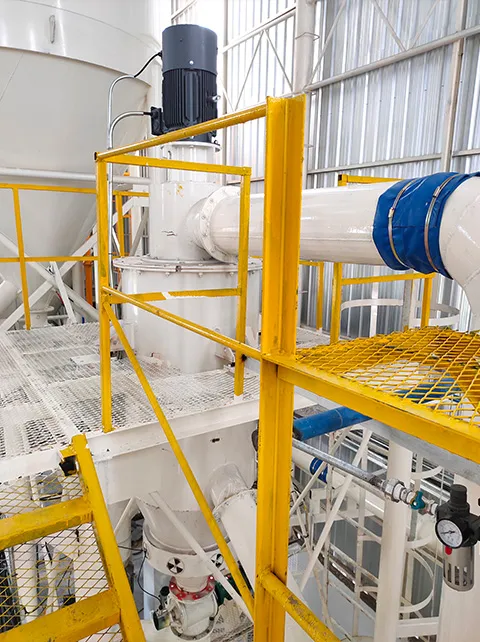
The ITC operates on a dynamic inertial principle, offering a robust and energy-efficient solution without the need for a large footprint.
- How It Works: The feed material is accelerated and injected into the classification chamber. A powerful vortex generator creates a strong centrifugal field, while adjustable guide vanes fine-tune the cut point. The inertia of coarse particles causes them to be ejected, while fines follow the air stream.
- Ideal For: General-purpose classification of calcium carbonate, talc, and other non-metallic minerals where high throughput and operational simplicity are key.
3. TDC Turbo Twin Double Classifier: Two Products from One Feed

Why settle for one product when you can make three? The TDC is essentially two classifiers in one, designed for maximum product flexibility
- How It Works: The machine features two independent classification rotors stacked in series, each with its own drive and speed control. The first stage extracts the coarse fraction, the second stage extracts the medium fraction, and the fines are collected separately.
- Ideal For: Producers looking to diversify their product portfolio from a single material stream, such as simultaneously producing coarse, medium, and fine grades of GCC.
4. MBS Air Separator: The Reliable Coarse Solution
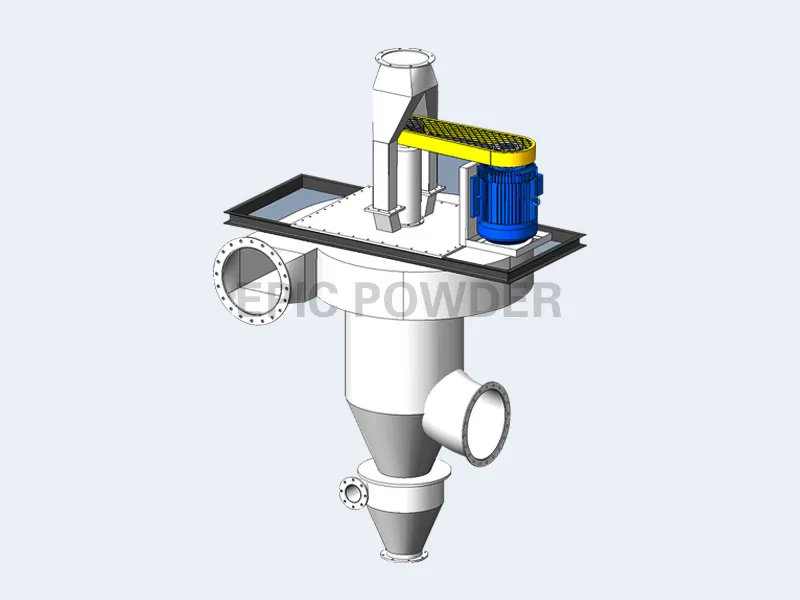
Based on the time-tested mechanical air separator design, the MBS is a workhorse for dedusting and coarse particle separation
- How It Works: A slow-rotating distribution plate disperses the material into an upward air stream. Fine particles are carried over into the cyclone, while coarse particles fall through the cage rotor for collection. Its simple and robust design ensures low maintenance and high reliability.
- Ideal For: Pre-classification before grinding mills (to improve mill efficiency) or for the dedusting of sands, minerals, and recycled materials.
5. CTC Centrifugal Classifier: Robust and Abrasion-Resistant

The CTC is built for toughness. Its centrifugal design is perfectly suited for handling sharp, abrasive, and granular materials
- How It Works: Material is fed into the center of a high-speed rotating plate and flung outward by centrifugal force. As it passes through a powerful cross-flow of air, fines are carried away while coarse particles continue their trajectory into a collection hopper. Key wear parts are lined with ceramic or polyurethane for maximum longevity.
- Ideal For: Classifying silica sand, quartz, feldspar, and abrasive recycled materials.
Quick Decision Guide for Air Classifiers by Epic
- HTS Air Classifier (Multi-Rotor Type): Pros: Amplified output, adjustable for varied densities—client-proven scalability. Cons: Slightly higher complexity than single setups.
- Air Classifying ITC: Pros: Broad fineness, sensor-driven precision. Cons: Requires full system (cyclone + fan).
- Centrifugal Classifier CTC: Pros: Compact, low-cost entry. Cons: Coarser range limits ultra-fine use.
- Powder Air Separator MBS: Pros: Massive scale, wear-proof. Cons: Higher upfront power draw.
- Turbo-Twin Double Classifier TDC: Pros: Superfine + energy-efficient. Cons: Specs less detailed for capacity planning.
Match your needs: Prioritize fineness for quality-driven apps (TDC or Multi-Rotor), capacity for bulk ops (MBS), or cost for starters (CTC). Epic Powder offers non-standard customizations, 1-year warranties, and installation support—contact them for material-specific testing.
Ready to upgrade your powder classification? Explore Epic Powder’s full range air Classifiers at powder-air-classifier.com or request a quote today. With the expert-guided designs, you’ll achieve sharper cuts, higher yields, and greener operations.

“Thanks for reading. I hope my article helps. Please leave a comment down below. You may also contact EPIC Powder online customer representative Zelda for any further inquiries.”
— Jason Wang, Senior Engineer
